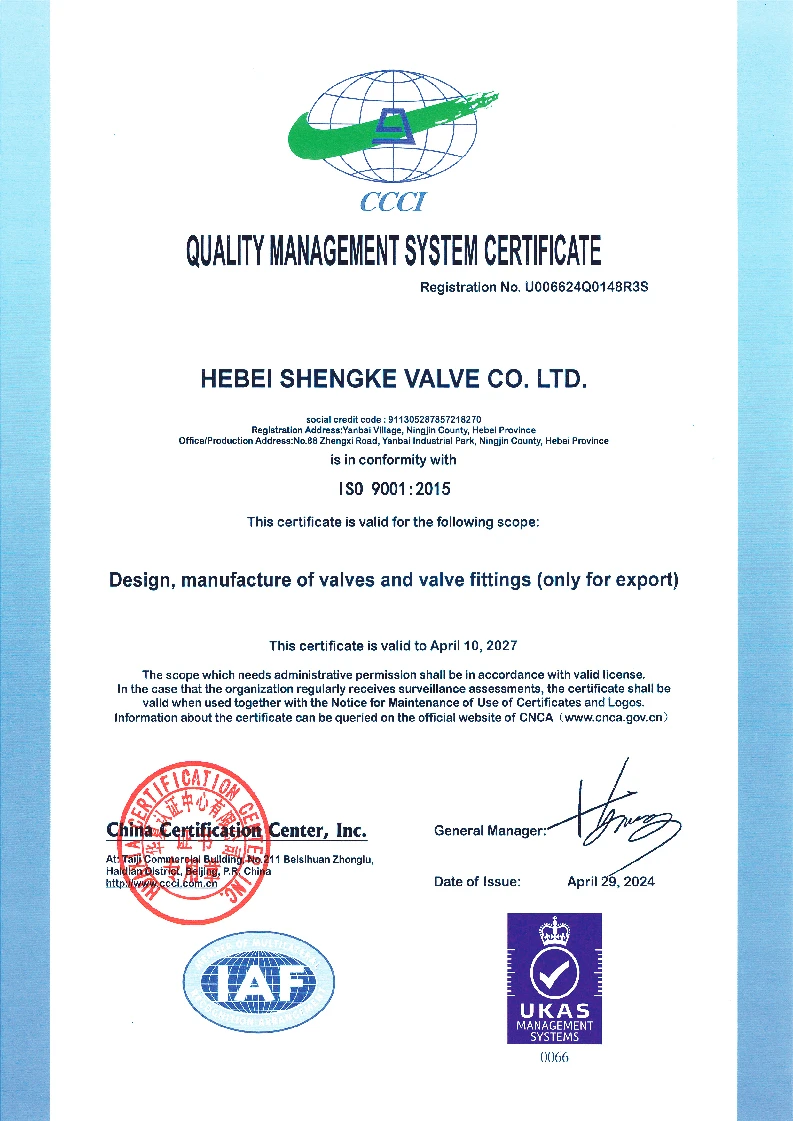ታኅሣ . 09, 2024 17:01 Back to list
Non-Rising Stem Gate Valve Characteristics and Applications in Fluid Control Systems
Understanding Non-Rising Stem Gate Valves A Comprehensive Overview
Valves are essential components in various industrial applications, regulating fluid flow and pressure within a system. Among the numerous types of valves available, the non-rising stem gate valve stands out due to its unique design and operational advantages. This article aims to explore the characteristics, functionality, and applications of non-rising stem gate valves, highlighting their significance in modern piping systems.
What is a Non-Rising Stem Gate Valve?
A non-rising stem gate valve is a type of valve that uses a gate mechanism to control the flow of liquids and gases. Unlike rising stem gate valves, which have a stem that moves vertically with the gate, non-rising stem gate valves feature a stem that remains stationary while the gate itself moves up or down. This design is particularly beneficial in situations where space is limited.
Design Features
The key components of a non-rising stem gate valve include the body, gate, stem, and bonnet. The valve body is typically constructed from durable materials such as cast iron, stainless steel, or bronze to withstand high pressure and temperature conditions. The gate, which is the primary element for regulating flow, can be made from similar resilient materials and is shaped in a way that allows it to slide into the flow path neatly. The stem mechanism, being non-rising, translates rotational movement into the linear motion needed to open or close the gate without protruding from the upper part of the valve.
One of the notable features of non-rising stem gate valves is their compact design. Since the stem does not extend vertically, these valves can be installed in spaces that may not accommodate rising stem types, making them ideal for underground applications or places with limited headroom.
Operational Mechanism
The operation of a non-rising stem gate valve is straightforward. When the valve is turned, the stem rotates, causing the gate to move upwards, allowing fluid to pass through. Conversely, turning the valve in the opposite direction lowers the gate, effectively blocking the flow. This mechanism provides a full opening and closing action, minimizing flow resistance and pressure loss when the valve is open.
Non-rising stem gate valves can be operated manually via handwheels, or they can be automated with electric, pneumatic, or hydraulic actuators for remote control and enhanced efficiency.
Advantages of Non-Rising Stem Gate Valves
non rising stem gate valve

1. Space-Saving Design As mentioned earlier, the non-rising design is beneficial where vertical space is limited. This makes them suitable for installation in pipelines beneath the ground or in areas with low clearance.
2. High Durability Non-rising stem gate valves are designed for high-pressure applications and can be constructed from various materials, enhancing their lifespan and reliability.
3. Minimal Flow Resistance When fully open, the gate allows for a smooth flow with minimal resistance. This feature is crucial for maintaining system efficiency, especially in water supply and wastewater management.
4. Versatile Applications These valves can be used in various industries, including oil and gas, water treatment, chemical manufacturing, and power generation, where they often function as shut-off valves.
Applications
Non-rising stem gate valves are frequently used in applications where a reliable sealing mechanism is required. Their robust construction and effective flow control make them suitable for
- Water and wastewater treatment plants - Oil and gas pipelines - Fire protection systems - Steam and thermal services - HVAC systems
In addition to their use in industrial settings, these valves are also commonly found in municipal water distribution systems, providing critical control for drinking water supply and treatment facilities.
Conclusion
Non-rising stem gate valves are a vital component in various industrial applications, offering distinct advantages such as a space-saving design, high durability, and efficient flow control. Their functionality makes them a preferred choice in situations where traditional rising stem gate valves may be impractical. As industries continue to evolve, non-rising stem gate valves will likely play an essential role in enhancing system efficiency and reliability, proving their worth in the vast landscape of industrial automation and fluid management. Understanding their benefits and applications is crucial for engineers and technicians involved in pipeline design and maintenance.
Share
-
Advanced Technology in Wire and Cable FactoryNewsAug.19,2025
-
Applications of Ball Check Valve in Water Treatment PlantsNewsAug.19,2025
-
How Osy Gate Valve Ensures Leak - Tight SealingNewsAug.19,2025
-
Selection Criteria for Wafer Type Butterfly ValveNewsAug.19,2025
-
Threaded Ball Valve Pressure RatingsNewsAug.19,2025
-
Y Strainer PN16 Cost - Effectiveness AnalysisNewsAug.19,2025


